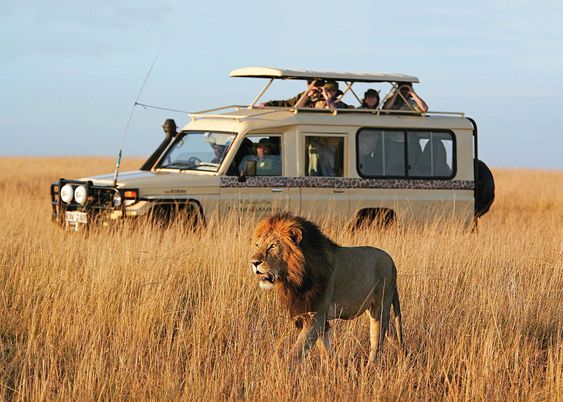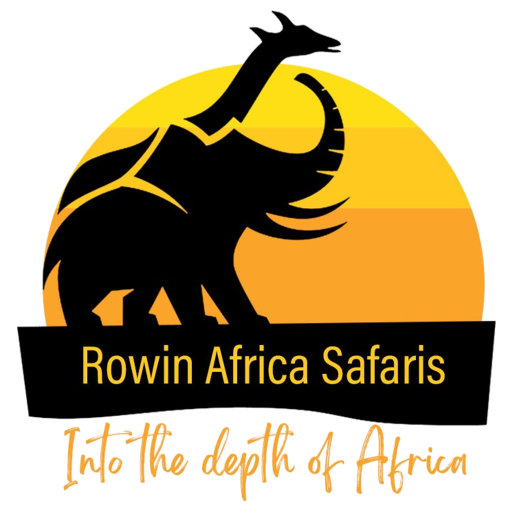The Ultimate Guide to A Serengeti Safari: Undoubtedly Serengeti is one of the most celebrated national parks in the world and a perfect meaning of true African wilderness, its great rolling grasslands and golden savannah provide an awe-inspiring sense of space and support large populations of zebras, buffaloes, elephants, giraffes, gazelles, antelopes and millions of wildebeests.
Serengeti is also a paradise for predators including lions, leopards, cheetahs, hyenas and wild dogs, because of the rich wildlife Serengeti is one of the most sought-after game viewing destinations in Africa.
Quick Facts About The Serengeti
- Serengeti means “The Land that Moves on Forever”
- Serengeti is home to one of the world’s greatest concentrations of wildlife
- The bulk of the Wildebeest Migration takes place in the Serengeti – the largest land mammal migration on Earth
- One of the best places to observe lions in the wild
- The Serengeti – Mara Ecosystem is one of the world’s biggest and most protected ecosystems
- High season in Serengeti is from July to October and Rainy seasons – about November to December and April to May
- Wildebeest Migration Season – the herds move around the Serengeti from October to July
Location of The Serengeti
Serengeti National Park “Tanzania’s flagship park lies in the north-western corner of the country and borders with Kenya to the north. The conservation area continues across the Kenyan border into the Masai Mara Ecosystem – one of the biggest and most protected ecosystem on Earth. The park spans approximately 30,000 square kilometers (12,000 square miles).
Other Safari Areas Around The Serengeti
- Southeast: The Ngorongoro Conservation Area
- Northwest and west: Grumeti Game Reserves
How To Get There
Arusha Town is the starting point for your Serengeti Safari and you have to fly into Kilimanjaro International Airport or Arusha Airport. There are several smaller airstrip handling domestic flights to Serengeti.
Alternatively, you can get to Serengeti National Park by driving. It is a drive of approximately 5-6 hours through Ngorongoro Crater.
Top Things To Do a Serengeti Safari
As home to the world’s greatest concentration of wildlife and primary Great Migration Destination, the top things to do in the Serengeti are focused on game. Here are the top Serengeti Safari Activities not to miss out
-
Game Drives
Drive around the endless plains of Serengeti with the help of expert guides and discover the diverse wildlife who call the park home including the iconic Big Five.
-
Walking Safaris
Venture out on foot with your guides and take note of nature’s intricacies while enjoying up-close and personal sightings of wildlife.
-
Hot Air Balloon Safaris
Soar above the endless plains and get the best bird’s eye view of the diverse landscape below. During the Great Migration, the sheer volume of wildebeest is simply staggering from above.
-
Witnessing the Great Migration
Each year, around two million wildebeest begin their migration – a perilous journey of river crossings, stampedes and predators all to follow the annual grazing shift. It is difficult to put it into words but watching the herds navigate this natural gauntlet is captivating.
-
Birding
Birding in Serengeti is equally fascinating and impressive as wildlife, around 500 recorded bird species flit through the plains of Serengeti at any one time.

How Long to Spend on a Serengeti Safari
Based on the size of the park and the amount there is to see and do, a minimum of 4 full days is recommended. But it is highly suggested that your stay longer if you can. Three days or less is not enough time to get a comprehensive, well-rounded experience in the Serengeti. So, the longer, the better. If your trip is combined with any other nearby destinations, this should give you time to experience the key areas before moving on.
Where To Go. Best Safari Areas in The Serengeti
Northern Serengeti
This is the northern region of The Serengeti and consists of small rivers, green rolling hills and lush granite outcrops (Kopjes). This region is far less crowded than the rest of the park and offers good wildlife viewing year-round.
It is the most remote corner of the park and sets the stage for the Wildebeest Migration’s dramatic Mara River Crossings around July/August. This is a great place to go on a hot-air-balloon safari for a bird’s eye view over thousands upon thousands of wildebeests and a good area to see elephants and giraffes.
Southern Serengeti
This is the most accessible part of Serengeti National Park which means it can a little busy during the peak safari season (about June to October). During the rainy season from about January to March, hundreds of thousands of wildebeests, zebras and gazelles graze here on fresh grass. It is also the time that the main calving season takes place and predators – especially the big cats – lions, leopards and cheetahs are taking every opportunity to hunt easy prey.
The southern part of Serengeti is within driving distance of the Ngorongoro Conservation Area which makes it easy to combine with a visit to Ngorongoro Crater, the crater delivers some of the easiest and most rewarding Big 5 viewing in the whole of East Africa region.
Central Serengeti
This region is very good game viewing area all year round, the heart of the Serengeti houses a number of camps and lodges which makes it a busy part of the park especially during peak safari season from about June to October. The region offer very good access to all Migration hot spots and is home to a high density of plains game including leopards, cheetahs and lions.
The region’s Seronera River Valley creatures a natural boundary between the grassy plains of the south and the wooded hills of the north. As a result, this area is a haven for wildlife from both habitats making the central Serengeti one of the richest ecosystems in the park with a good year-round game viewing.
Lions and cheetahs are common here and leopards are often seen in the valley.
Eastern Serengeti
The Eastern Serengeti offers diverse habitats, a wide range of wildlife and good grazing for the migrating wildebeest between December and March. It is a popular pit stop during the Migration’s calving season (between February and March) which attracts many large predators.
This area is much quieter than the rest of the Serengeti and is a great location to avoid the tourist crowds. Also it is an excellent area to see big cats – one of the best for cheetahs and delivers those iconic lions-lazing on Kopjes scenes

Western Serengeti
The endless plains of Serengeti’s Western Corridor stretches all the way to Lake Victoria, the Grumeti River and its gallery forests run through this aisle of the Serengeti a sanctuary of enormous Nile Crocodiles and hippos.
Every year between about May and July, convoys of wildebeests (around 40 km or 25 mi long) arrive on the banks of the Grumeti to kick off the main event. The treacherous river crossings, this is one of the nature’s most thrilling spectacles to witness, yet a bittersweet experience as many of the gallant gnus are killed by hungry crocodiles.
If you are looking for a classic big game safari combined with a way- from the crowds luxury accommodation.
When To Go: Best Time of the Year for a Serengeti Safari
The density of wildlife in The Serengeti offers a spectacular safari experience no matter the time of the year. Although some of the wildebeest migrate to find fresh grazing, not all of them do and one of the predators move with the herds either. The wide open plains and mild climate of Serengeti National Park means that vegetation is never too thick to see wildlife, and the region’s two rainy seasons (November to December and April to May) are seldom to inclement. Short thunderstorms most occurs in the late afternoons, but the animals won’t relocate when it is raining.
| High or Peak Season | Low or Green Season |
| About July to October | About November to December & April to May |
| Highest rates | Lowest rates |
| Need to book up to a year in advance | No need to book so far in advance |
| Cool and dry weather | Hot and occasionally wet weather |
| Not many baby animals or migrant birds | Lots of baby animals and birds around |
| Most crowded | Least crowded |
| Great photography conditions | The best light of the year for photography |
